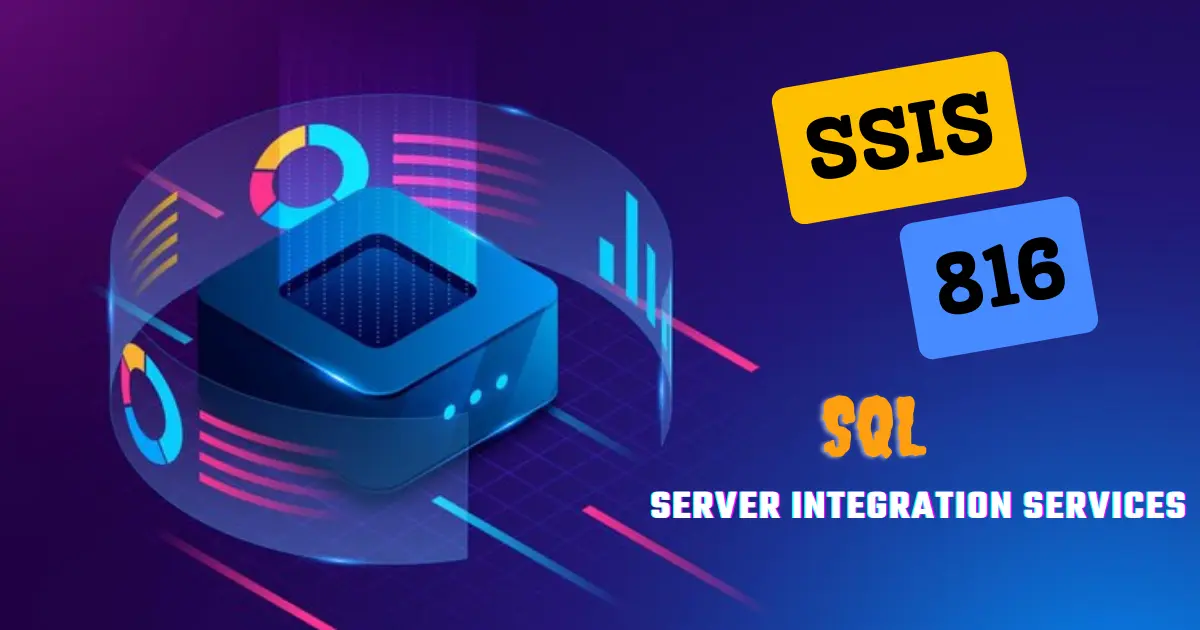In today’s data-driven world, businesses rely on robust systems to manage, analyze, and transfer data efficiently across platforms. SQL Server Integration Services (SSIS) is a powerful tool within Microsoft SQL Server, designed specifically for data migration, transformation, and integration. By handling tasks such as data warehousing, extraction, transformation, loading (ETL), and data integration, SSIS allows organizations to consolidate data from multiple sources and gain insights to drive strategic decisions.We well discuss about ssis-816.
This article provides a comprehensive look at SSIS, its key components, common issues (potentially relevant to “SSIS-816”), and best practices to maximize its capabilities.
What is SQL Server Integration Services (SSIS)?

SSIS is an enterprise-level data integration and ETL tool built by Microsoft. It’s part of SQL Server and enables users to build, execute, and manage workflows that consolidate and process data from various sources. SSIS is especially valuable for large-scale data integration projects as it can handle complex data transformations and large volumes of data with high efficiency.We well discuss about ssis-816.
Key Features of SSIS
- Data Extraction and Transformation: SSIS can connect to a wide variety of data sources, including databases, flat files, XML, and web services, enabling users to extract data from these sources and transform it based on specific business rules.
- Data Loading (ETL Process): SSIS excels at ETL processes, allowing users to extract data from one source, transform it according to predefined logic, and load it into a destination system such as a data warehouse.
- Control Flow and Data Flow: SSIS includes both Control Flow, which determines the overall workflow of the integration process, and Data Flow, which manages the movement and transformation of data.
- Error Handling and Logging: Built-in error-handling and logging features help identify issues in data workflows, ensuring data integrity and allowing users to address errors efficiently.
SSIS Architecture and Components
SSIS has a modular architecture that makes it flexible and adaptable to various data integration requirements:
- SSIS Packages: Packages are the core units of work in SSIS, containing the tasks, connections, and workflows necessary for data integration.
- Tasks: These are the building blocks of a package, including predefined tasks for data flow, file manipulation, and data transformation.
- Connections: SSIS supports a range of data source connections, from SQL databases to cloud-based sources, making it a versatile tool for integrating data across multiple platforms.
- Transformations: Within SSIS, users can implement various data transformation operations, such as data cleansing, merging, and aggregating, to prepare data for analysis.
Troubleshooting Common SSIS Issues

Errors in SSIS workflows can interrupt the ETL process and hinder data consistency and integrity. Although “SSIS-816” doesn’t appear to be a commonly documented error code, understanding how to troubleshoot frequent SSIS issues can help you resolve various challenges you might face.We well discuss about ssis-816.
1. Connection Errors
When SSIS is unable to connect to a data source, it could be due to network issues, incorrect login credentials, or permissions. To troubleshoot:
- Verify that the server is accessible and credentials are correct.
- Check firewall settings that may block the connection.
- Ensure that the data source user has the necessary read or write permissions.
2. Data Type Mismatch
SSIS requires data types to be compatible between sources and destinations. If there’s a mismatch, the ETL process may fail or produce inaccurate data. To address this:
- Ensure that columns in both source and destination tables have compatible data types.
- Use data conversion transformations to standardize data types during the data flow.
3. Performance Bottlenecks
SSIS processes large amounts of data, so performance issues can arise when dealing with complex workflows. To optimize performance:
- Use asynchronous transformations only when necessary, as they can slow down data flow.
- Optimize data sources by filtering data to reduce the amount processed.
- Enable logging to identify slow steps in the workflow and reconfigure package settings to reduce processing time.
4. Insufficient Memory Errors
SSIS requires significant memory, especially for large datasets. If you’re facing memory-related issues:
- Increase the buffer size for data flow tasks, which helps SSIS process data more efficiently.
- Adjust the number of rows per batch to balance memory usage.
- Reduce the complexity of transformations or break down larger packages into smaller, manageable packages.
5. Deployment and Configuration Issues
SSIS packages may face issues during deployment due to environment-specific settings. To handle these issues:
- Use configuration files or SSIS parameters to manage environment variables, such as server names or file paths.
- Set up deployment models that match your production environment to prevent runtime errors.
Best Practices for Using SSIS
To maximize the effectiveness of SSIS and reduce troubleshooting time, following these best practices is essential:
- Use Logging Extensively: SSIS offers logging features to track the execution of packages and identify bottlenecks or errors in real time. Logging enables better visibility into the ETL process, helping troubleshoot issues quickly.
- Optimize Package Design: Keep SSIS packages modular and organized, separating tasks and data flows into logical units. This makes troubleshooting and maintenance more manageable.
- Standardize Data Types and Formats: Ensuring consistency in data types and formats throughout the process minimizes errors, especially in multi-source projects.
- Avoid Hardcoding Values: Hardcoding values (e.g., server names, file paths) can lead to issues when deploying packages to different environments. Instead, use parameters or configuration files for dynamic settings.
- Monitor Performance Regularly: By monitoring package performance regularly, you can adjust buffer sizes, data flow settings, and memory usage to improve processing speed and efficiency.
The Future of SSIS in Data Integration

While SSIS remains a robust tool for on-premises data integration, the growth of cloud technologies and big data platforms has led to shifts in data management needs. Microsoft offers Azure Data Factory (ADF) as a cloud-based alternative to SSIS, allowing organizations to perform ETL processes in the cloud and integrate data across cloud services.
However, SSIS remains relevant for businesses with legacy systems or on-premises databases, and it can also integrate with ADF for hybrid environments. With its deep integration capabilities, SSIS continues to serve as a reliable tool for ETL and data integration, bridging on-premises and cloud data sources for many organizations.We well discuss about ssis-816.
Conclusion
SQL Server Integration Services (SSIS) is a powerful tool for data integration, offering extensive capabilities for extracting, transforming, and loading data. While challenges such as connection errors, data mismatches, and performance bottlenecks are common, they can be managed through best practices in design, error handling, and monitoring. SSIS remains a valuable asset in data management, with ongoing relevance for on-premises systems and hybrid cloud environments.We well discuss about ssis-816.
Understanding and addressing common SSIS issues helps data engineers and administrators to build efficient workflows, ensuring data quality and reliability. Whether you’re managing a single database or multiple data sources, SSIS provides a solid foundation for complex ETL processes, contributing to successful data-driven decision-making.We well discuss about ssis-816.

[…] thanks to its user-friendly interface and customization options. The T3 comes equipped with a powerful processor, high-quality display, and a long-lasting battery, all of which make it ideal for daily tasks, […]